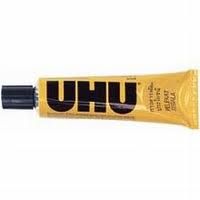Recently i had i little accident and a lower part of the chassis was slightly damaged so i found a new one.The only problem is that i can't find the appropriate glue to put it on.I know that the original Lotus glue is not a real option because it needs to be baked.I found some 2-compounds glue out there but they are grey or black and i wanted to keep the original orange-red color.Does anyone has any idea what glue can i put on?

Chassis Adhesive
Started by
gsijim
, Feb 11 2011 03:04 PM
5 replies to this topic
#1

Posted 11 February 2011 - 03:04 PM
#2

Posted 11 February 2011 - 04:57 PM
http://forums.seloc....ge=1#pid3773919
Think you need to register to view SELOC.
There are a few threads on chassis glue.
#3

Posted 11 February 2011 - 06:05 PM

#4

Posted 11 February 2011 - 07:01 PM
Brave man, as bonding something properly is not as easy as it looks..
Info I have found so far suggests that Araldite (Huntsman Adv Materials) 2015 can be used. 2 part (50/50) epoxy resin which can be mixed with red/green dyes.
See: http://www.intertron...ata/ara2015.pdf
Baking is not required, but some heating helps as it's specified at 40 degrees C cure. Make sure it's not used under it's design temperature or curing may not happen properly. Should have pretty much the same characteristics as the original bonding agent.
Make sure the suface is prepped (eg. cleaned and a light media blast to get a roughened surface) properly and you use the correct accelerators. Also make sure the gaps are kept at <1.5mm for the correct bond strength. It's critcal that the parts are clamped together firmly and fixated until it's fully cured (at least 16 hours).
Lotus uses the big self-tapping bolts on the chassis to help in this area (as well as helping to stop the bonded joints peeling), while clamping the chassis parts in a jig/vice.
Bye, Arno.
#5

Posted 11 February 2011 - 08:20 PM
Does araldite not turn brittle though?
#6

Posted 12 February 2011 - 07:04 PM
Does araldite not turn brittle though?
Depends if you're comparing it to the off-the-shelf Araldite at Halfords.. This stuff is quite different though
The original glue from Lotus cures to a very hard and brittle state as well. Check the exposed glue pieces on the chassis and see how hard it has become. Also, keep in mind that the surfaces should really be (almost) touching to get the best strenght bond.
Any more than a 1mm gap with adhesives like these will make the bond useless or at least much weaker than intended. The strenght comes from the glue curing to long polymer chains that should really bond to each surface. You end up with long molecules that 'grab' both sides of the joint and give it's high strength. If the gap is too big then many of the molecules cant 'reach' beteen the surfaces and resulting strenght is much reduced.
Common 'superglue' or cyanoacrylate is an extreme example. It will bond things together very securely, but ONLY if they touch (aka. there is virtually NO gap). If there's a gap it does nothing, but just dries/cures to a white powder. (and it works brilliantly to glue your fingers or eyelids together as it's activated by moisture... Bingo!
The chassis glue is not an polyurethane-like bonding agent (like Sikaflex 225 as used to bond on the windscreen and such) which remain somewhat flexible, but have a much, much lower strenght, so are not suited to hold a 'tub' like the Elise/VX chassis together..
This hardness/stiffness is needed to get the proper structural strength (little or no movement in the bonded joints), but also a weakness as significant deformation of the ali will cause the glue to fracture and lose a lot of it's strength and start the join peeling.
In the case of crashed cars made from bonded materials that are repaired, this is a potential risk. Bonds that visually 'look' OK further away from the impact area may have been (over)stressed bacuase of deformation and have been compromised so in future use or a second crash they may fail much sooner.
Bye, Arno
1 user(s) are reading this topic
0 members, 1 guests, 0 anonymous users
















